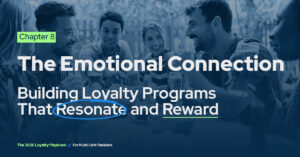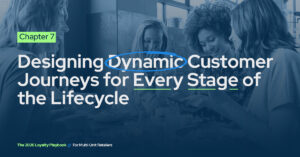In the previous chapter, we explored why unifying customer data is the foundation of loyalty. Once that foundation is built, the next question becomes clear: how do you use that data to actually drive smarter marketing? The answer lies in Audience Science—the practice of moving beyond static demographics to build predictive and behavioral segments that anticipate what customers will do next.
Demographics No Longer Define the Customer
Traditional segmentation sorts audiences by age, gender, or income. These categories once served as useful shortcuts, but in today’s fast-moving, multi-channel world, they barely scratch the surface. Two customers may look identical demographically yet behave completely differently—one orders every Friday through an app, while another visits once a month with family in-store.
According to Gartner, brands that rely primarily on demographic segmentation experience up to 40 percent lower engagement rates than those using behavioral data. Static traits cannot predict dynamic actions.
From Description to Prediction
Modern segmentation uses behavior as the starting point and prediction as the differentiator. It groups customers by what they do, how often they do it, and what they are likely to do next. A predictive model might highlight guests at risk of churn or identify those primed for upsell based on past engagement.
Accenture found that 91 percent of consumers are more likely to shop with brands that recognize and remember them, proving that behavioral understanding drives not only loyalty but emotional connection.
“Segmentation is no longer about slicing your audience thinner. It’s about understanding them deeper,” Katie Scott, Art Director and creative lead at Response Labs. “Every communication gains purpose towards what we can learn and understand about the customer.”
Putting Audience Science into Practice
Audience Science combines analytics, creativity, and technology. To build it into your loyalty strategy:
- Aggregate first-party and loyalty data from CRM, app, and POS systems.
- Identify behavioral triggers such as purchase frequency, favorite menu items, or engagement recency.
- Use predictive analytics to forecast future behaviors like churn or next purchase.
- Design personalized messages or offers that align with those predicted outcomes.
As Harvard Business Review explains, brands that integrate predictive segmentation into their marketing achieve up to 3x higher retention compared to those using demographics alone.
The Human Side of Predictive Segmentation
The most successful brands balance data science with empathy. While algorithms can identify what customers might do, only humans can decide how to make that experience meaningful. Behavioral segmentation provides the insight; emotional intelligence turns it into loyalty.
Think with Google notes that 80 percent of consumers now expect brands to personalize experiences in real time. Those who do see measurable increases in satisfaction and purchase frequency.
Conclusion
Unified data sets the stage, but Audience Science brings it to life. When marketers use predictive and behavioral segmentation to understand not just who customers are but what motivates them, loyalty becomes proactive instead of reactive. The result is smarter messaging, higher engagement, and a customer relationship that evolves in step with every interaction.
Discover more in The Loyalty Playbook for insights on unifying data in Chapter 5.
If you’re ready to transform your loyalty program into a true growth program, we’re here to help. Contact us today to talk about how to get started.




